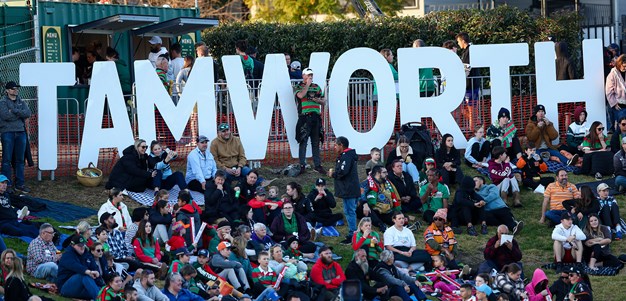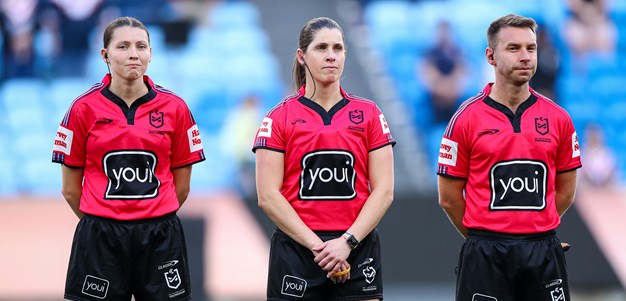Games have never been closer in the 115-year history of the code in Australia and fans are responding by turning up to action packed matches in record numbers.
With 78 per cent of matches so far this season decided by 12 points or less, the NRL has more games within that range after four rounds of any premiership year since 1908.
In addition, crowds are their highest since the establishment of the NRL in 1998, with 612,093 fans attending the 32 games in the opening four rounds at an average of 19,128 per match.
Annesley discusses Manly forward pass ruling
Crowds for Round 4 matches averaged 20,336, with Friday night’s inaugural Broncos-Dolphins clash being the biggest turnout for an NRL match at Suncorp Stadium.
TV ratings have also been strong, according to footyindustry.com, and the introduction of the Dolphins this season has resulted in a 25 per cent increase in Brisbane viewers, headed by the match against the Broncos, which drew an overall audience of 1.3 million.
NRL head of football Graham Annesley said games this season were more evenly contested, remained closer for longer and featured more action.
Sloan, McInnes contact call correct says Annesley
“Obviously we want to see games as close and as competitive as possible, we want to see fans go to games knowing that their side is competitive, and knowing that their side is a chance of winning all through the game,” Annesley said.
“We are getting deeper into the season now and although the standard has been incredible since Round 1, we are just seeing the intensity and the competitiveness of our games continue to improve.
“Our games are competitive right to the end this year and that is a significant change over the last few years.”
Annesley showed a graph at his weekly media that highlighted how matches were remaining close until the end, with the average margin of matches so far this season being just 8.8 points.
He said the ball was in play for longer (62.6%) and the elapsed time per match, which is how long a game takes from kick-off to full-time, was significantly less (91.48m).
“When a game blows out in time, it generally means that there have been a lot more stoppages and lengthier stoppages - whether they are for injuries, try reviews, video replays or whatever,” Annesley said.
“While there may be just as much action, it gets drawn out over a long period of time. When a game is compacted into a shorter time frame it just adds to that level of entertainment and excitement for fans, who are seeing non-stop action.”
No definitive answer on Pompey call: Annesley
As a result of the 5% increase of ball-in-play time for Round 4 compared to the year to date average, there were an additional three sets of tackles per match.
“In terms of play-the-balls, there have been an average of almost 300 play-the-balls per game in round 4 (295 per game) and a total of 8,913 play-the-balls, compared to 8,618 play-the-ball in the first four rounds last season,” Annesley said.
“There have been an extra 50 sets of play-the-balls this season.
“We don’t spend a lot of time talking about the play-the-ball, but a lot of coaches will tell you that winning the contest in the play-the-ball is the most critical factor in determining whether you are going to win or lose.”



